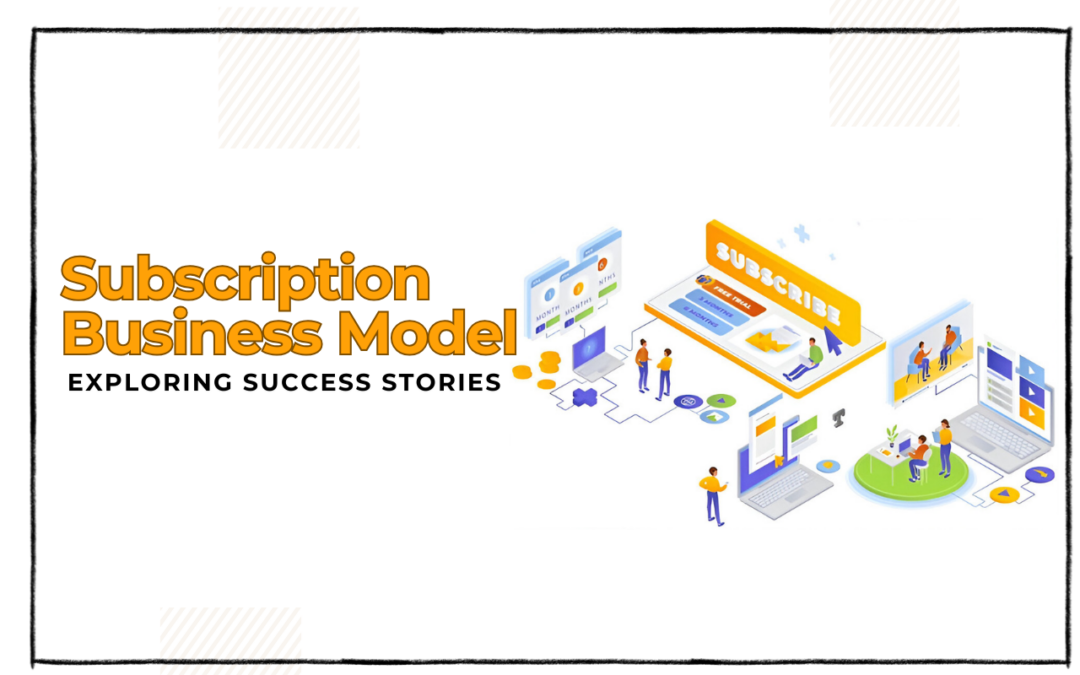The subscription business model examples have revolutionized the way businesses generate revenue and foster customer loyalty. With the global subscription economy projected to grow significantly in 2025 and beyond, understanding these models and their success stories is essential for entrepreneurs and established companies alike. In this blog, we delve into diverse subscription business model examples, highlight their key strategies, and examine statistics predicting their future potential.
What is a Subscription Business Model?
The subscription business model allows customers to pay a recurring fee (monthly, quarterly, or annually) for access to a product or service. This model provides businesses with predictable revenue streams while offering customers convenience and continuous value. Companies across various sectors, including technology, entertainment, and healthcare, have adopted this model to innovate and thrive in competitive markets.
The Rise of Subscription Models in the Global Economy
Market Growth Statistics
- The subscription economy is expected to exceed $1.5 trillion by 2025, driven by increased consumer preference for convenience and personalized experiences.
- A survey by Zuora indicates that 70% of business leaders believe subscription models will be key to future business success.
- Gartner predicts that by 2030, 80% of software providers will switch to subscription-based revenue models.
These projections highlight the immense potential of the subscription economy, making it imperative for businesses to adopt or enhance their subscription strategies.
Notable Subscription Business Model Examples
1. Streaming Services
Companies like Netflix, Spotify, and Disney+ epitomize the success of subscription-based streaming services. These platforms provide users with unlimited access to content for a fixed monthly fee, leveraging:
- Personalized recommendations through AI.
- Tiered subscription plans catering to diverse customer needs.
2. E-Commerce Subscription Boxes
Brands such as Birchbox and Blue Apron have popularized curated subscription boxes. These services offer:
- Tailored product selections.
- Exclusive member discounts.
- Convenient delivery schedules.
According to Shopify, the e-commerce subscription market grew by 41% year-over-year in 2024, showcasing its burgeoning demand.
3. SaaS Platforms
Software-as-a-Service (SaaS) providers like Adobe, Microsoft 365, and Slack have embraced subscription models to:
- Ensure consistent revenue streams.
- Deliver regular software updates.
- Enhance user retention through value-added features.
The SaaS industry’s revenue is forecasted to reach $200 billion by 2025.
4. Fitness and Wellness Subscriptions
Companies like Peloton, Calm, and Headspace have tapped into the health-conscious market with:
- On-demand workout sessions.
- Meditation and mental wellness programs.
- Flexible subscription tiers for individuals and families.
With the global fitness app market expected to grow at a CAGR of 21% through 2025, this sector offers immense opportunities.
5. Food Delivery Services
Services such as Uber Eats Pass and DoorDash DashPass provide subscribers with perks like:
- Free delivery on eligible orders.
- Exclusive promotions.
- Simplified reordering features.
These models retain customer loyalty while increasing order frequency, boosting revenue for both the platforms and partner restaurants.
6. Healthcare and Wellness Plans
Subscription models have penetrated the healthcare sector through services like:
- Telemedicine platforms (e.g., Teladoc Health).
- Medication delivery subscriptions.
- Wellness programs focusing on preventive care.
7. Gaming Platforms
Xbox Game Pass and PlayStation Plus offer gamers:
- Access to extensive libraries of games.
- Exclusive discounts on in-game purchases.
- Multiplayer gaming features.
The gaming subscription market is projected to grow at a CAGR of 14% by 2028, fueled by technological advancements and evolving gamer preferences.
Benefits of Subscription Business Models
- Predictable Revenue: Subscriptions provide businesses with steady cash flow and the ability to forecast earnings accurately.
- Enhanced Customer Loyalty: Regular interactions foster stronger relationships, increasing customer lifetime value (CLV).
- Scalability: Subscription models are easily scalable, accommodating customer base growth without proportional cost increases.
- Data-Driven Insights: Companies gain valuable insights into customer behavior, enabling better personalization and product innovation.
Emerging Trends in Subscription Models
Sustainability-Focused Subscriptions
With consumers increasingly prioritizing sustainability, brands like Loop offer refillable household products through subscription services, reducing single-use packaging.
Hybrid Models
Businesses are blending one-time purchases with subscriptions to cater to diverse customer preferences. For instance, Amazon’s Subscribe & Save program provides discounts on recurring orders while allowing one-off purchases.
AI and Personalization
AI-powered recommendations and personalized subscription plans are becoming key differentiators. Spotify’s curated playlists and Stitch Fix’s tailored clothing selections are prime examples.
Strategies for Implementing a Successful Subscription Model
- Understand Your Audience Conduct thorough market research to identify customer needs and preferences.
- Offer Flexible Plans Provide tiered pricing options to cater to different budgets and requirements.
- Focus on Retention Invest in exceptional customer support and regular engagement to reduce churn.
- Leverage Technology Use advanced tools like AI and data analytics to optimize offerings and predict trends.
- Measure and Optimize Regularly analyze performance metrics such as customer acquisition cost (CAC) and CLV to refine strategies.
Conclusion
The subscription business model examples demonstrate the versatility and effectiveness of this approach in modern commerce. From entertainment and e-commerce to healthcare and gaming, subscription models offer scalable growth opportunities while meeting evolving consumer demands. By leveraging emerging trends, adopting customer-centric strategies, and embracing technological advancements, businesses can position themselves for long-term success in the burgeoning subscription economy.
As we approach 2025 and beyond, the potential of subscription models remains unparalleled. Companies ready to innovate and adapt will undoubtedly thrive in this dynamic landscape. For those yet to embrace this model, the time to act is now.












